Dear Parents,
It is always a positive experience meeting with each of you for conferences as it gives us the chance to share about your child’s progress, and it’s always great learning about what you have all been up to as well. Conferences are a great opportunity for us to share stories, hear stories, and learn more about you and your relationship with your child. We especially love to hear that you are noticing progress in your child at home. Some common topics of progress that many parents noticed from their own child include more coordination in fine motor skills, progress in language development, the ability to tell stories, a love for music, and new interests in different topics and subject areas. As we have moved forward with our observations and what we gathered from conferences, Jackie and I have been very busy offering more lessons and material to each child on an individual basis.
It would take too long to get into what everyone is working on individually, but I can share about some general topics and material that the majority of students have participated in.
Music
Every child has had additional lessons on music when it comes to rhythm and keeping a beat while singing. We have practiced many exercises that involve counting out slow and fast tempos while drumming a beat, and we have also had some singing exercises particularly on breathing (because how we breathe is very important in singing– we need breath in order to produce sound, and controlling our breath can help us to project and carry longer notes, etc.).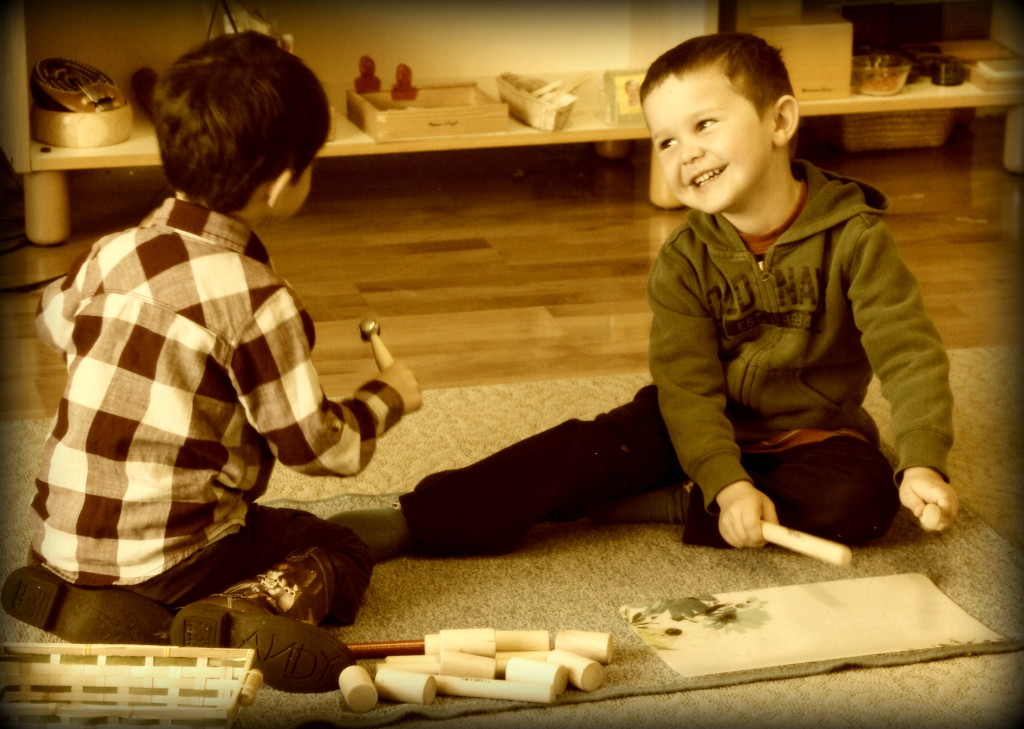
Singing Songs
As I always say, I’m not much into kids songs, because I see more opportunity for growth in “adult songs” that resonate with us. Ages 3 through 6 are primary years for children to absorb positive ways to communicate, and music can be used as a tool to encourage kids to talk about feelings. I’m sure that I’ve mentioned before that when we introduce a new song, we read the lyrics first and talk about what the song writer might have been experiencing during the writing process. And just a side note, if it happens to be a “love song,” I might skip over a few lines if it’s a little too “mushy” as my goal is not to get kids lost in the idea of “falling in love” with a significant other at this age, rather to find a way to relate to the song in the moment. I think that many classic love songs can be turned around to focus on people we love in our lives such as friends and family. Stories found in music can help children to appreciate the song more, and they might even act out the emotions while they are singing. We have had countless open discussions on music, giving kids the opportunity to be exposed to new vocabulary as they express their thoughts. A good singer is a passionate singer, and it’s great to see our students take pride in what they are singing. Below is a list with links of some songs off of the top of my head that we have been singing this year. You might recognize some from last year, because kids are still requesting those songs, too:
Song List:
Beatles- Yellow Submarine, Hello Goodbye, All You Need is Love, All My Loving
Blue Moon– there are two versions of this song, and the kids have heard both: Frank Sinatra’s Blue Moon & The Marcells
Sound of Music (movie): Edelweiss, Do Re Me
Singing in the Rain (movie): Singing in the Rain
The Tokens: The Lion Sleeps Tonight
John Denver: Country Roads
Audrey Heburn: Moon River
Getting to Know You– two oldies versions to choose from: James Taylor & Julie Andrews
Leaving on a Jet Plane– two versions: John Denver & Peter, Paul, and Mary
Chubby Checker: Let’s Twist Again
Judy Garland: Somewhere Over the Rainbow
And the occasional kids songs I don’t mind so much:
Danny Pagan: Train is Comin
Super Simple Learning: Snow Flake Song
Practical Life & Science Material
We have added a variety of new utensils to the practical life area since conferences. Much of this material is meant to challenge all age groups. Large tongs have been swapped out for training chop sticks, and we have added a variety of tiny spoons and droppers for color mixing. Push pins, tacks and needles for sewing have also been widely utilized. Just to mix things up, we’ve added some practical life material to our science section with chiseling tools for digging up fossils and tweezers for sorting tiny rocks and minerals. As you’ve heard before, practicing practical life material makes for great exercises to build fine motor skills, and we have especially seen improvement with our students in general when it comes to drawing, coloring between the lines, and writing.
Building Block Extensions
We’ve got some creative pupils in the studio that love a challenge when it comes to building structures with the brown stairs, pink tower, cylinders, and geometric solids. Since the beginning of the year, they have come a long way with their perception on grading various dimensions of geometric solids. Below are examples of structures built by some of our “proud little architects.”
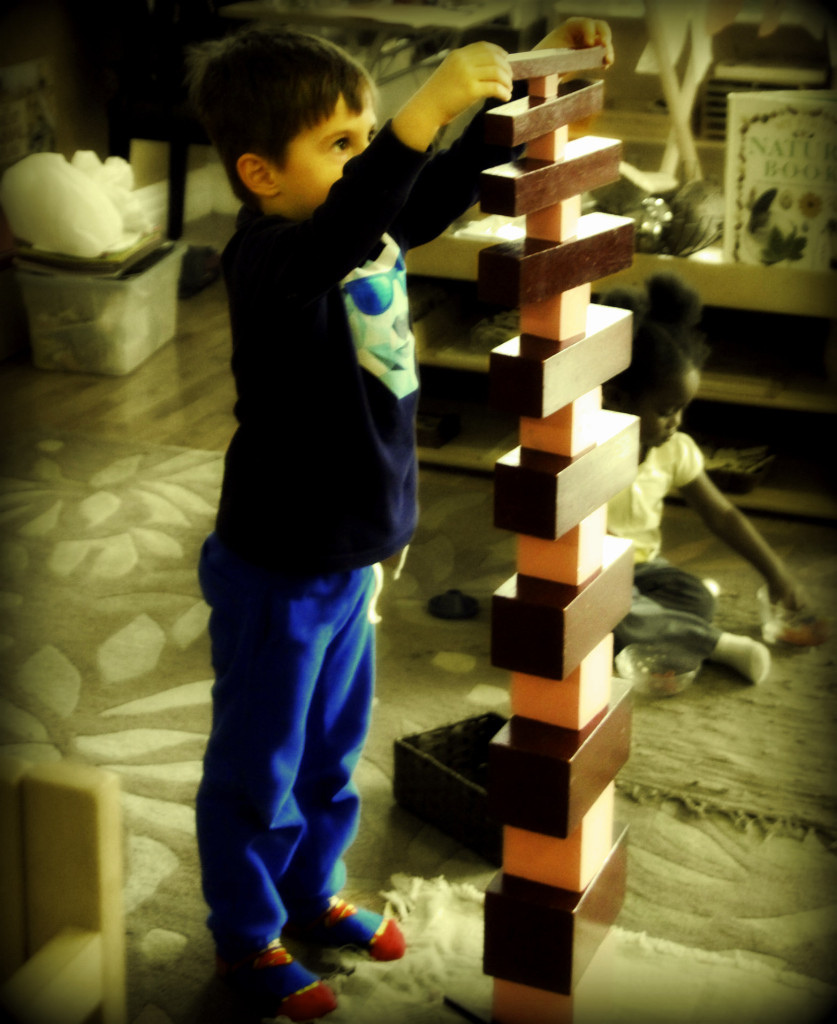


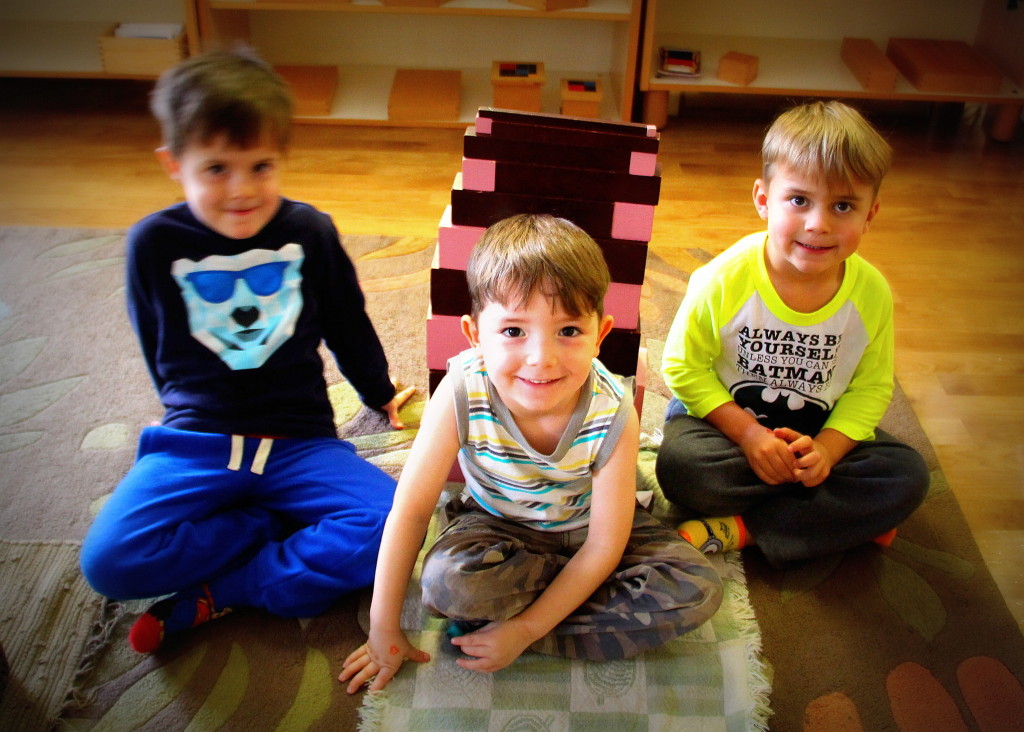
 Puzzles
Puzzles
This year, the kids are crazy about puzzles! At their age, puzzles are great for thinking abstractly as children begin to see potential in the negative spaces where the puzzle pieces are missing. Solving a puzzle works their eye-hand coordination and fine motor abilities as a child learns to self correct. Puzzles are also great for social skills as kids work together as a team while they talk about details of colors and shapes that go together. Many of our older students are now working on 45-75 piece puzzles!
Storytelling
Our students continue to practice sequencing stories with props, but you also find them “reading” out loud to each other in small groups with any old library book. Ask your child to retell a story after you’ve read one as it’s great practice for good listening skills 🙂
Lessons on Poverty
Every year I reach out to my students in the most gentle way to talk about poverty in the world. In Montessori, we are encouraged to talk about some hard topics on global realities to bring awareness and humbleness to our students. I spend a lot of time preparing how to word these topics beforehand, because we have to be careful with how we approach such sensitive issues. We don’t want to frighten our students– we want to assure them that they are safe and that we are very fortunate to have families that care for us. I found a number of good library books that are written thoughtfully to teach the subject of people in poverty with imagery explaining that each individual has a different reason, or story, as to how they became homeless or in a very poor living situation. If you have any concern or would like learn more about my lessons on poverty, there are some videos that I typically share with the students every year under an article I wrote a couple of years ago, Lessons on Poverty (also found in the “Extra Extra” section). Below, students explore library books on homelessness and poverty.
Art
Art activities are available every day during work cycle. You can find kids creating art in many different forms through stenciling with the metal insets, coloring activity pages, sewing bookmarks or wallets, participating in seasonal hands-on activities and so forth. Most recently, everyone had fun painting and decorating pine cones offered by Jackie.
Chapter Books
Jackie has begun reading chapter books to the students– a chapter a day! There are not many pictures to follow along, so the kids must practice using their imagination as they tune in a little closer to follow the stories. At the end of each chapter, Jackie offers an open discussion for kids to take turns retelling parts in the story. We’ve got some sharp memories in this group and it’s neat to hear the kids chime in with feedback.
I had asked Jackie to reach out to all of you when she asked to read Charlotte’s Web, only because I have honestly never read the book and thus never knew the story. Most parents were excited about it, but some were concerned about the delicate topic and we appreciate that you reached out. I just want to take a moment to say that Jackie and I are trained to “soften” tough areas in stories that kids might not be “ready” for yet. As long as it is a story that could apply to the real world, we are Montessori trained to address these topics carefully. In response to Jackie’s email, multiple parents suggested other stories that were more on the fantasy side, and so I gave Jackie the “go ahead” to read a few of them that we found to have good reviews. One of the books talked about death as well, but we decided to dodge the topic completely. It’s called My Father’s Dragon and it was the first chapter book that was read this year. It had some fun stories in it, but I admit we literally changed some big chunks of the story lines to keep things on the lighter side. This is supposed to be a fun experience, and we don’t want to give your children nightmares by any means! In the proper setting, we won’t always dodge around real topics if we think a child could benefit from a little truth, but in this case the story was about a dragon and talking animals, so I really saw no benefit in emphasizing on anything that seemed “dark” or “scary.” We were able to focus on the positive lessons of each story with no animal killing involved! After Jackie finished reading My Father’s Dragon, she read Mercy Watson to the Rescue, which made for an easy read. Jackie is about to begin a book called “Fortunately, the Milk,” another one suggested by some parents. Thanks to all of you who gave feedback and I hope that you feel more at ease about our approach to reading books in general. And apologies for my long winded explanations, but I realize that the Montessori Method covers very real and sensitive issues unlike many traditional schools and it’s not always easy to grasp at first. I often feel the need to be very thorough, especially for those just being introduced to our philosophy. Please reach out personally if you ever have any questions or concerns.
Celebrations of Life
Not too long ago in the Primary Studio, we had a celebration of life for Eloise, and most recently, a celebration of life for Lillian. Thank you parents and family for participating on their special days! Much appreciated.
Work Cycle Photos
I included a lot more images than usual from work cycles to go with the topics above, so if you don’t see your child below, it’s because I was being selective. Everyone is shown somewhere throughout the blog at least twice, and you can rest assured that I have far more photos to share with you during our next parent-teacher conference! Have a great week, and be sure to share the photos with your kids!





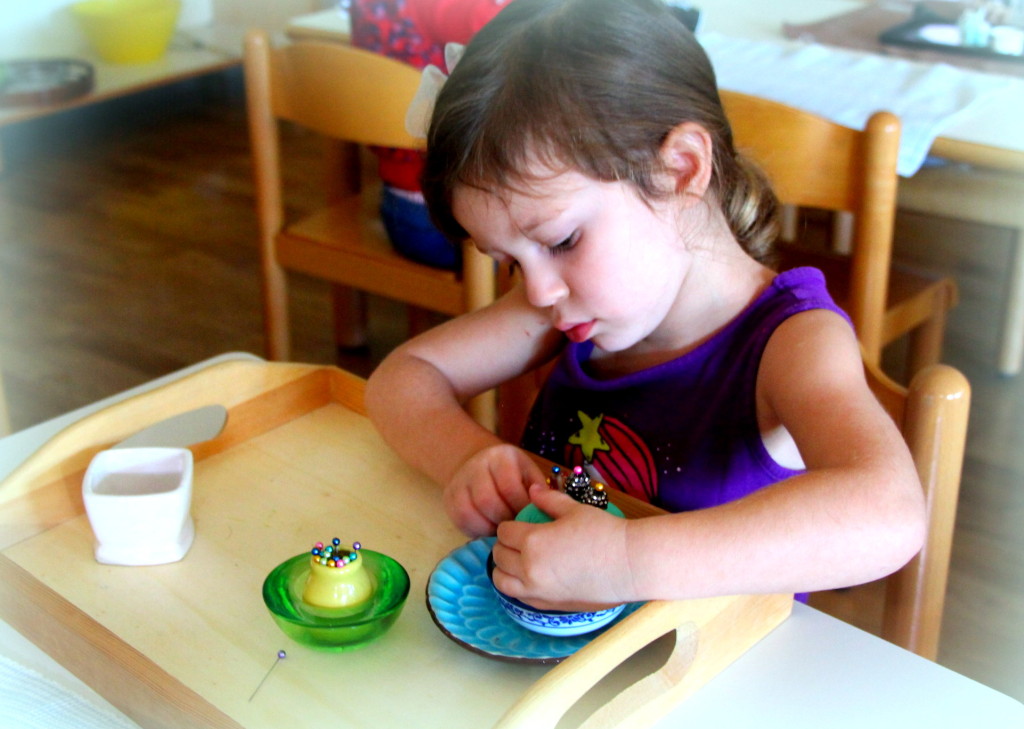


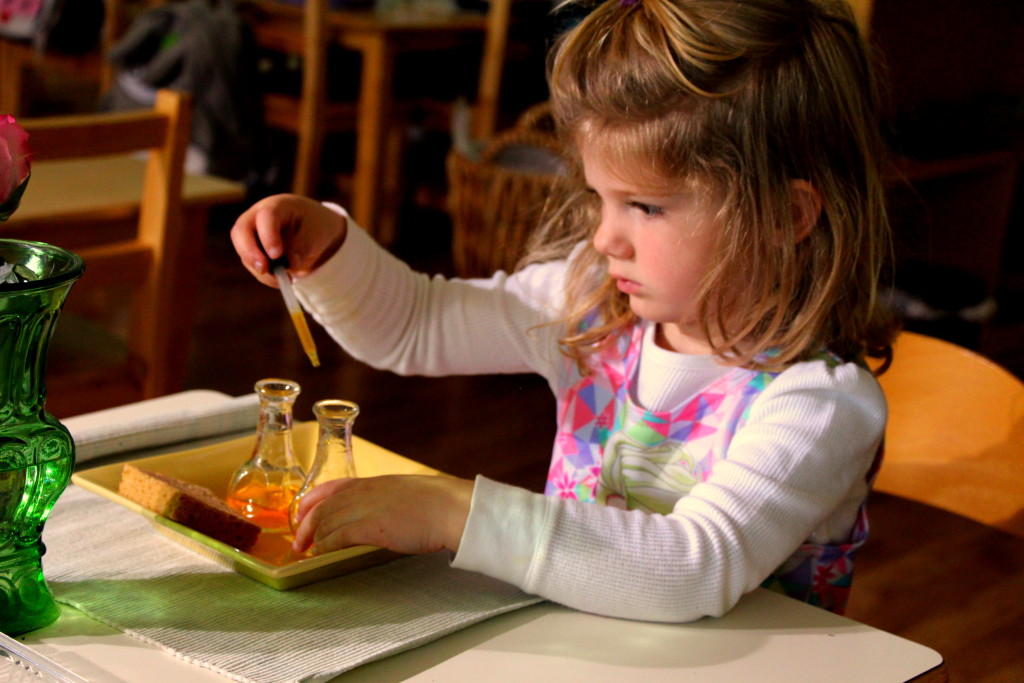
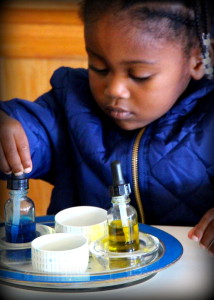

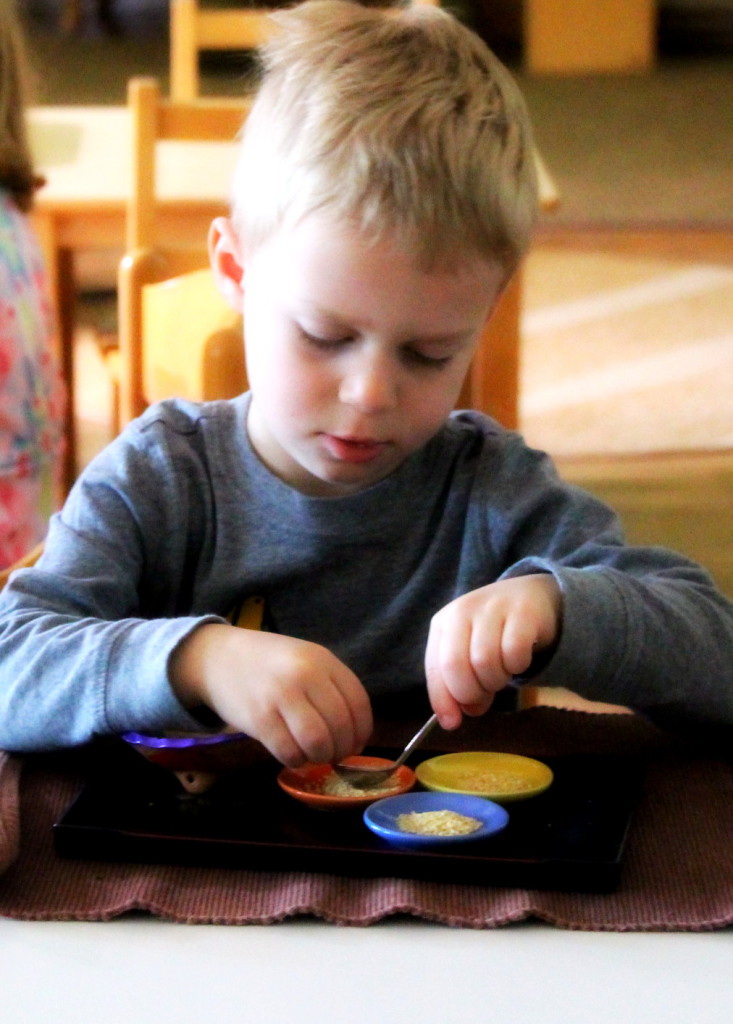


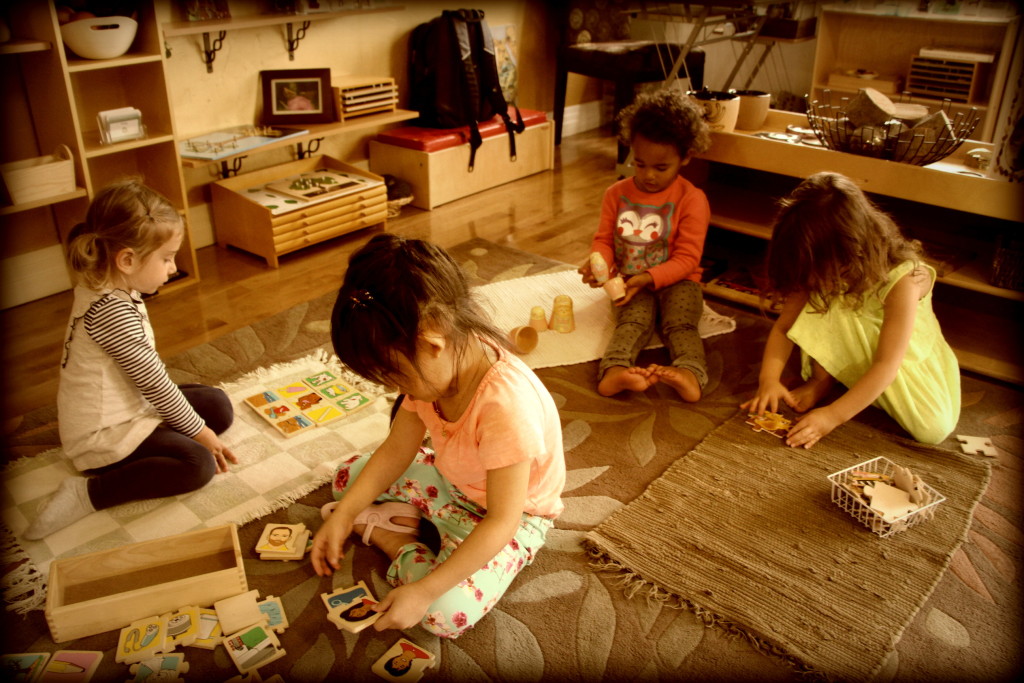



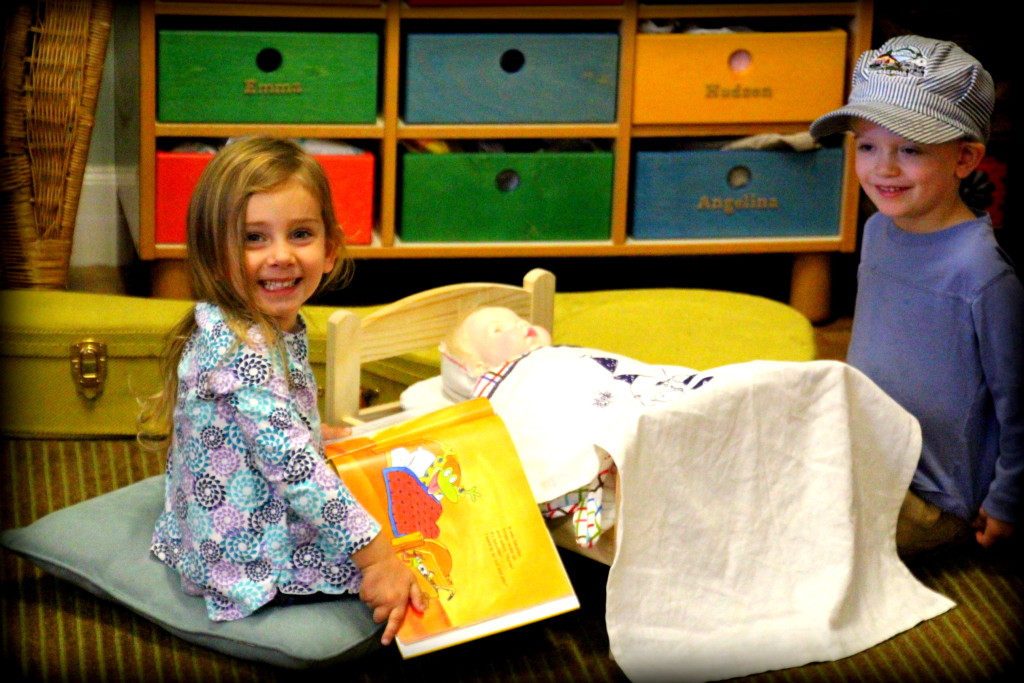



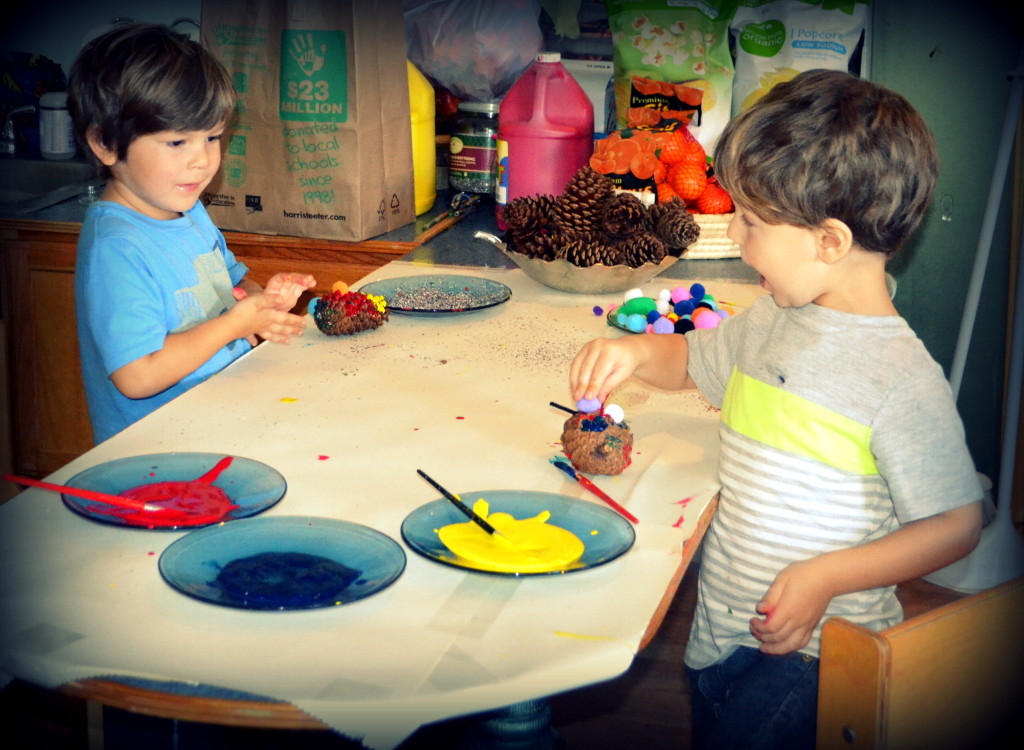
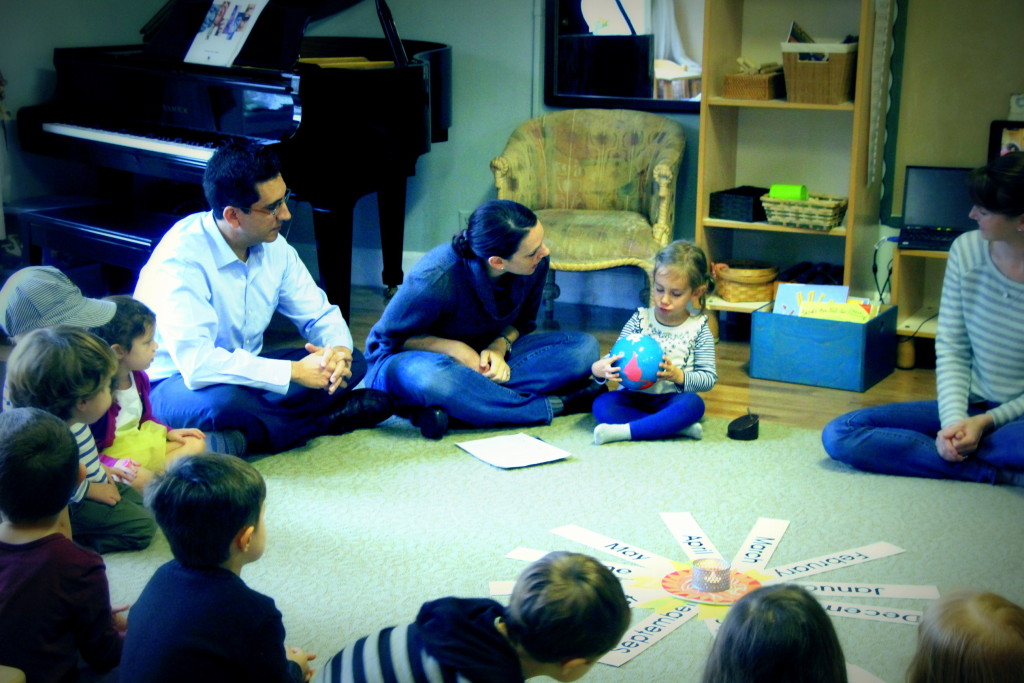



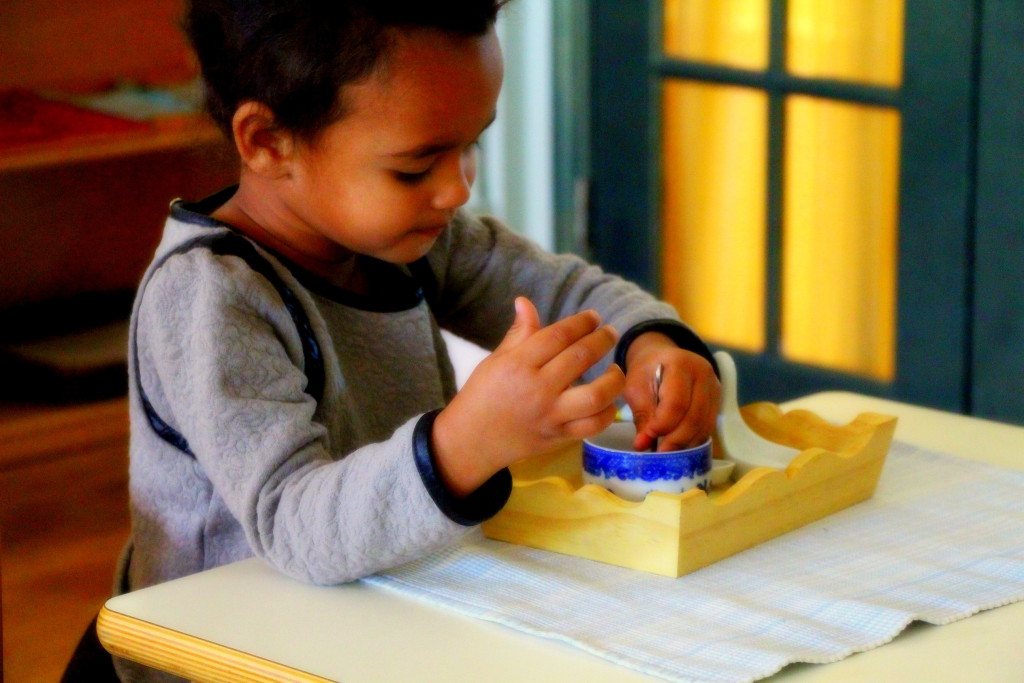




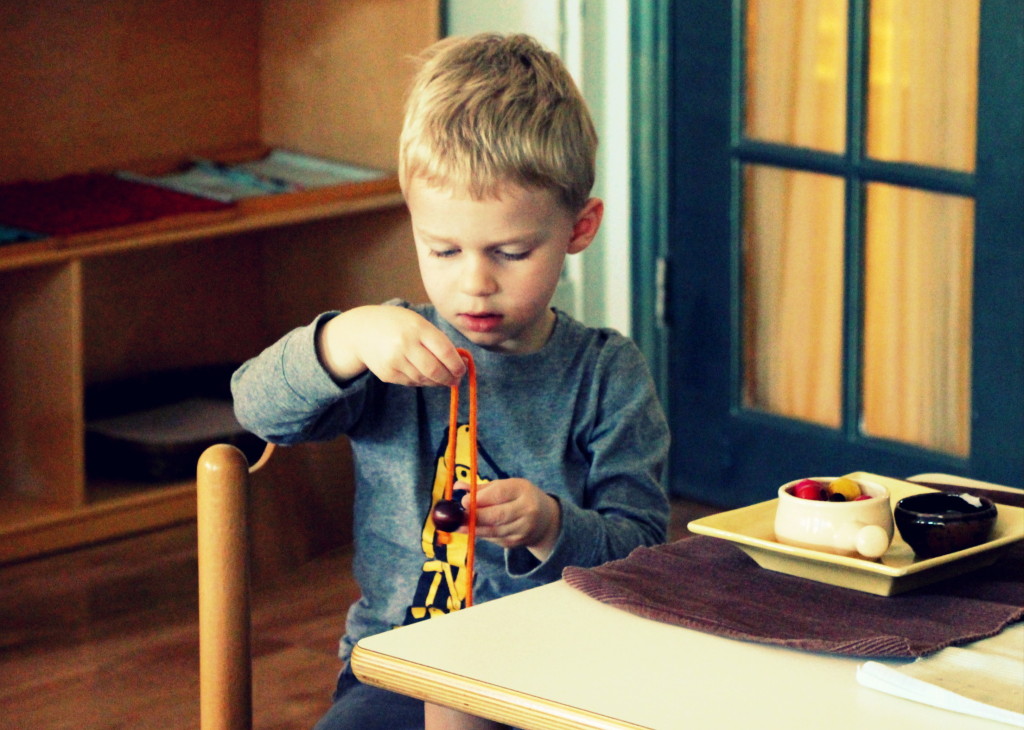

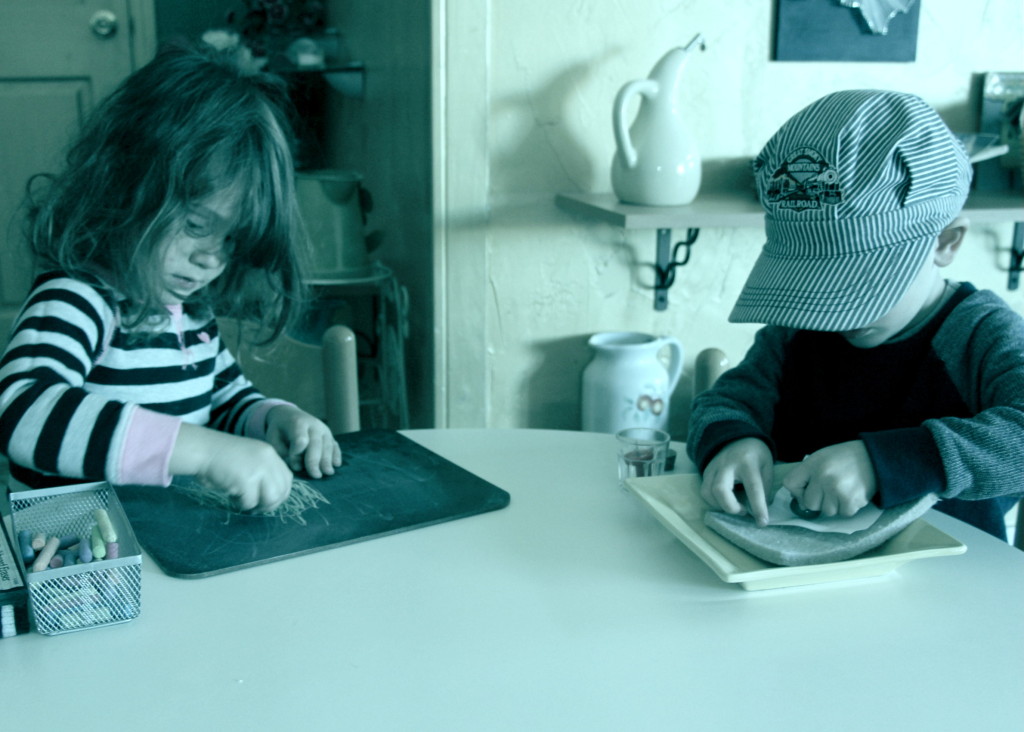



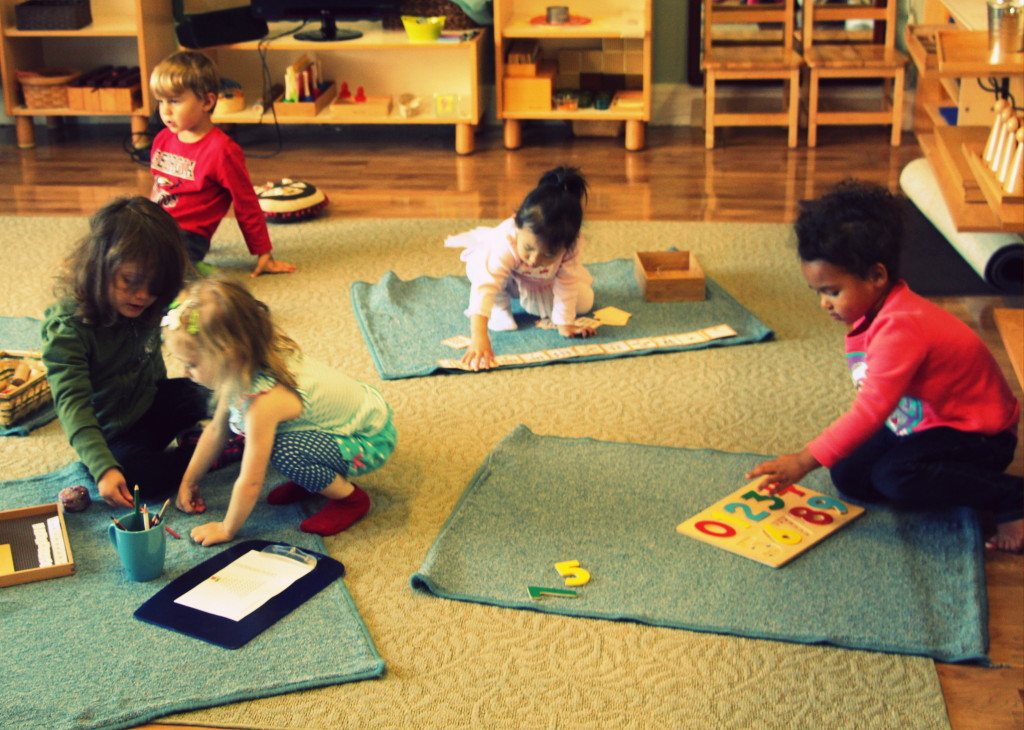




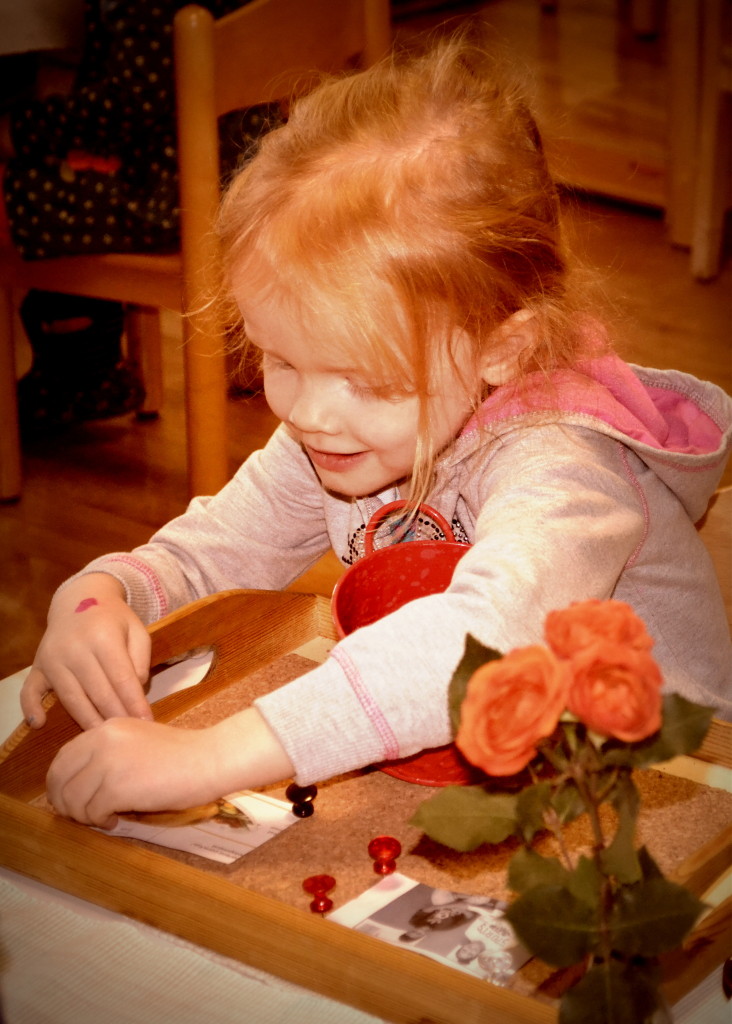
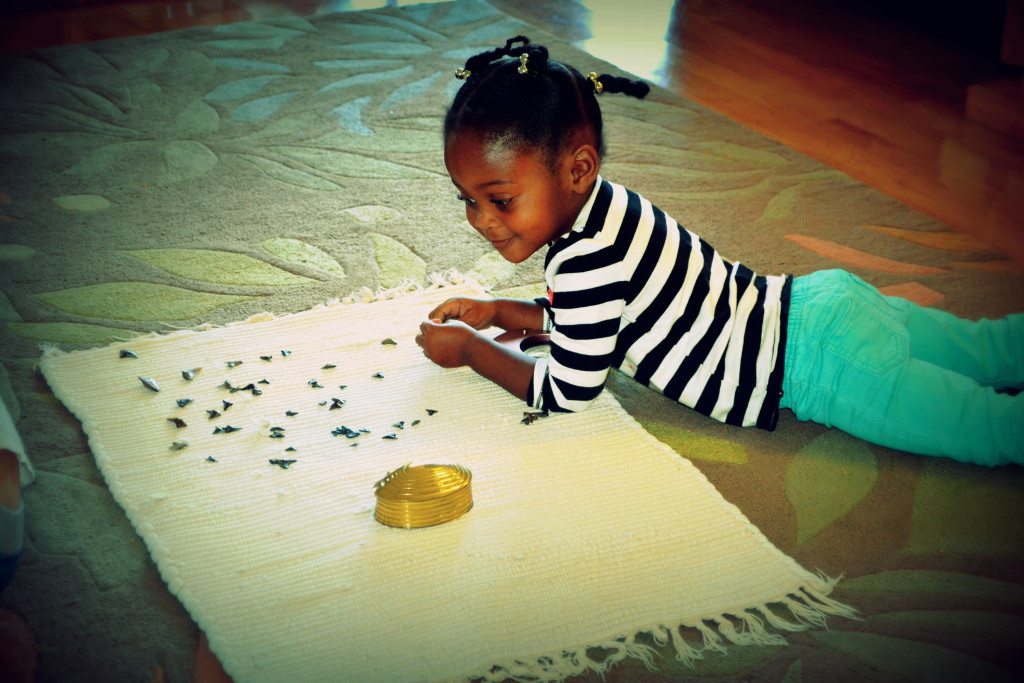






Wonderful! I love hearing about what’s going on. Thanks, Angelique & Jackie!
And thank you, Katie!
This is fantastic! Thank you 🙂
<3 You're welcome!
Love love love these, Angelique! Thank you for capturing their beautiful worlds in pictures and words!
Awe, so glad you see it that way!
Thank you for the update! I was really tickled to hear Angie start belting out “Hello, Goodbye” in the middle of bathtime. It gave us something to sing together over the last week.
I love Charlotte’s Web. I wish this could have been one of the books that Jackie read to the class.
Thanks for sharing such an adorable story about Angie! Glad to hear she’s singing the songs at home!
Charlotte’s Web isn’t completely swept under the rug just yet. We are going to focus on a few more chapter books for now. After some time, if it seems appropriate, we will give it a go. I think I will finally read it in the meantime to get a better sense of what it’s all about. Perhaps we will have to take a “soft approach” to touchy subject areas. I’ll keep you posted!
Thank you for the updates. ! Love the blog and the pics 🙂
Angelique this is wonderful! So fun to see & hear more. Micaela LOVES her days at Indigo — she has taken to leading us in “circle time” which includes presenting a lesson, a series of songs, and a work cycle. She is very clear about the order of things and does not like when her mom asks questions out of turn or starts to laugh. All that to say — she is soaking up SO MUCH! Glad you are starting to read chapter books too — we are excited to get to do that at home too 😉
That’s so exciting, Filipe! I love hearing these things… I wish I could see her leading “circle time” with you guys– how cute! It’s nice to hear random stories from parents, because it tells us that our lessons are benefiting your kids in a positive way. Yay!
Thanks for this wonderful post! Cooper, too, started belting out Hello, Goodbye and Country Roads. Now he and his Grandpa sing Country Roads together. It’s adorable :). It makes us so happy to see him so excited about music and school in general! Thanks to you and Jackie! We are very thankful for you on this Thanksgiving.
Thank you– we appreciate your thoughts! Awe, that’s so sweet about Cooper and his Grandpa! He has really opened up a lot since we last saw you and it’s great to see him branching out not just in music but with his work, etc. 🙂